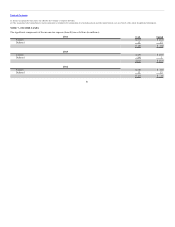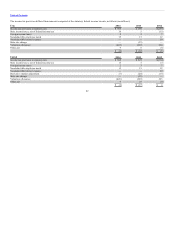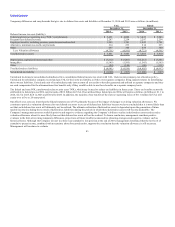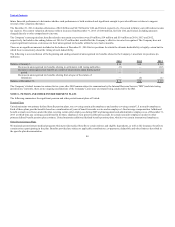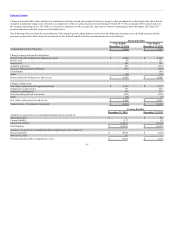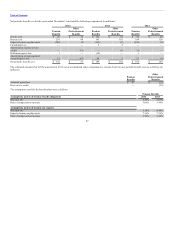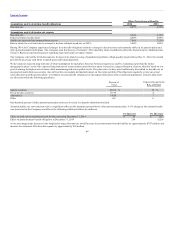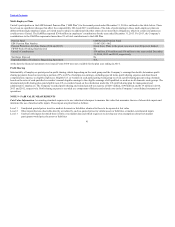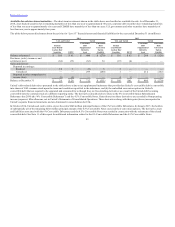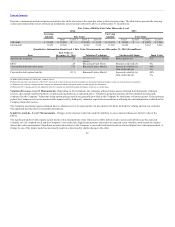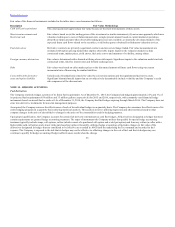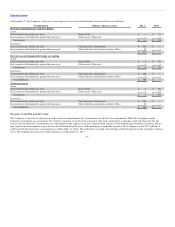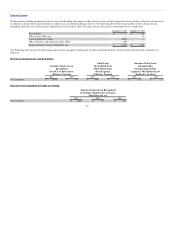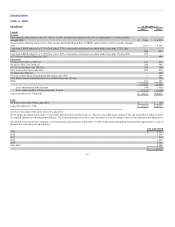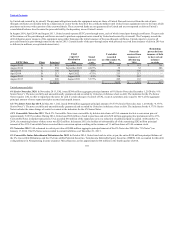United Airlines 2014 Annual Report Download - page 91
Download and view the complete annual report
Please find page 91 of the 2014 United Airlines annual report below. You can navigate through the pages in the report by either clicking on the pages listed below, or by using the keyword search tool below to find specific information within the annual report.
Table of Contents
United’s participation in the IAM National Pension Plan (“IAM Plan”) for the annual period ended December 31, 2014 is outlined in the table below. There
have been no significant changes that affect the comparability 2014 and 2013 contributions. The risks of participating in these multi-employer plans are
different from single-employer plans, as United may be subject to additional risks that others do not meet their obligations, which in certain circumstances
could revert to United. The IAM Plan reported $368 million in employers’ contributions for the year ended December 31, 2013. For 2013, the Company’s
contributions to the IAM Plan represented more than 5% of total contributions to the IAM Plan.
Pension Fund IAM National Pension Fund
EIN/ Pension Plan Number 51-6031295 - 002
Pension Protection Act Zone Status (2014 and 2013) Green Zone. Plans in the green zone are at least 80 percent funded.
FIP/RP Status Pending/Implemented No
United’s Contributions
$39 million, $38 million and $36 million in the years ended December
31, 2014, 2013 and 2012, respectively
Surcharge Imposed No
Expiration Date of Collective Bargaining Agreement N/A
At the date the financial statements were issued, Forms 5500 were not available for the plan year ending in 2014.
Substantially all employees participated in profit sharing, which depending on the work group and the Company’s earnings thresholds, determines profit
sharing payments based on receiving a portion of 5% to 20% of total pre-tax earnings, excluding special items, profit sharing expense and share-based
compensation expense, to eligible employees. Eligible U.S. co-workers in each participating work group received a profit sharing payout using a formula
based on the ratio of each qualified co-worker’s annual eligible earnings to the eligible earnings of all qualified co-workers in all domestic work groups. The
international profit sharing plan paid eligible non-U.S. co-workers based on the calculation under the U.S. profit sharing plan for management and
administrative employees. The Company recorded profit sharing and related payroll tax expense of $235 million, $190 million and $119 million in 2014,
2013 and 2012, respectively. Profit sharing expense is recorded as a component of Salaries and related costs in the Company’s consolidated statements of
operations.
Fair Value Information. Accounting standards require us to use valuation techniques to measure fair value that maximize the use of observable inputs and
minimize the use of unobservable inputs. These inputs are prioritized as follows:
Level 1 Unadjusted quoted prices in active markets for assets or liabilities identical to those to be reported at fair value
Level 2 Other inputs that are observable directly or indirectly, such as quoted prices for similar assets or liabilities or market-corroborated inputs
Level 3
Unobservable inputs for which there is little or no market data and which require us to develop our own assumptions about how market
participants would price the assets or liabilities
91


